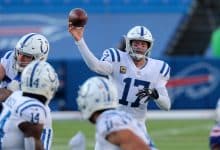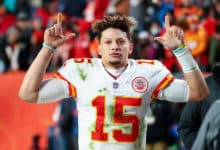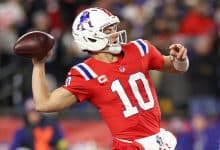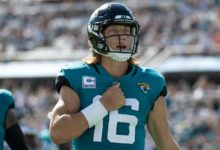Why the Pittsburgh Steelers Would Be Foolish to Draft Shedeur Sanders at No. 21 in the 2025 NFL Draft
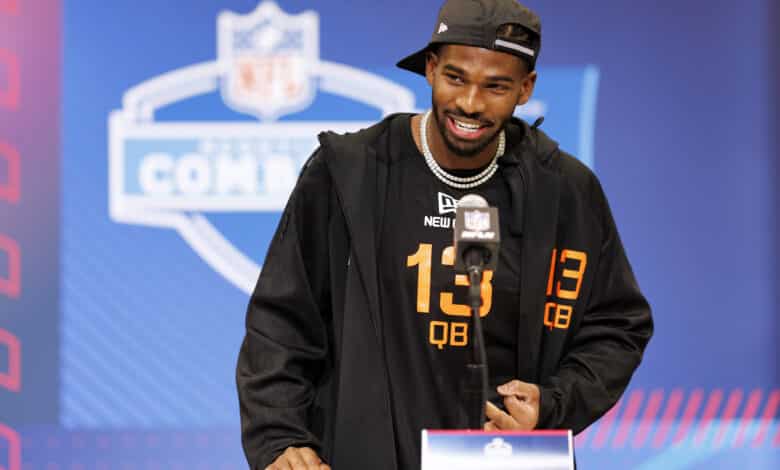
The 2025 NFL Draft starts Thursday night, and it’s a class getting acceptable hype for its defensive line/edge prospects and for Travis Hunter, the most interesting player in the draft. Where it’s not doing so well is with the quarterbacks, as Colorado’s Shedeur Sanders continues to see his stock fall, and no one seems to agree where Jaxson Dart should go, outside of maybe the Pittsburgh Steelers.
The 2025 quarterback class is not going to be anything like last year when a record six quarterbacks were drafted in the first 12 picks, and Jayden Daniels (No. 2 pick) had arguably the best rookie quarterback season in NFL history for Washington.

In fact, a “weaker” quarterback class one year after a historically deep one is just classic regression to the mean that we’ve seen before if you study 1983-84, 2004-05, 2018-19, and 2020-21.
That does not mean the 2025 draft has nothing to offer in the way of quarterbacks, as Miami’s Cam Ward is almost a sure thing to go No. 1 to the Titans. It’s not like he’s a generational talent such as Peyton Manning or Andrew Luck, but he’s arguably a better lead-off QB1 for a draft class than Jameis Winston (2015), Mitch Trubisky (2017), and Kenny Pickett (2022) were in the last decade, and he’s at least comparable to Jared Goff (2016), Kyler Murray (2019), and Bryce Young (2023).
But things get problematic at quarterback in 2025 when you talk about what will happen after Ward goes No. 1 overall this Thursday night.
We see the mock drafts and the draft odds at top-rated sportsbooks. Players like Travis Hunter, Abdul Carter, Will Campbell, Mason Graham, and Ashton Jeanty are likely going to be gone with those next picks.
In a normal draft with great quarterback prospects, you’d expect quarterback-needy teams like the Browns (No. 2 pick), Giants (No. 3), Raiders (No. 6), Jets (No. 7), and Saints (No. 9) to be all over Shedeur Sanders and/or Jaxson Dart in the top 10 picks.
But that’s not the case right now. Sanders has seen his draft position fall to 8.5 with a heavy favorite (-400 odds at Bet365) towards the over, meaning he’ll go no earlier than the Saints at No. 9. In fact, that’s looking more likely after the surprising NFL news that Derek Carr’s shoulder may jeopardize his 2025 availability.
But if all those teams in the top nine picks pass on Sanders, too, then he might experience a 2005 Aaron Rodgers-type of draft night in the green room with the camera on him and his famous dad for a few hours. Other than the Colts (No. 14), Cardinals (No. 16), or Seahawks (No. 18) doing something shocking, there may not be another team ready to take Sanders until the Pittsburgh Steelers at No. 21.
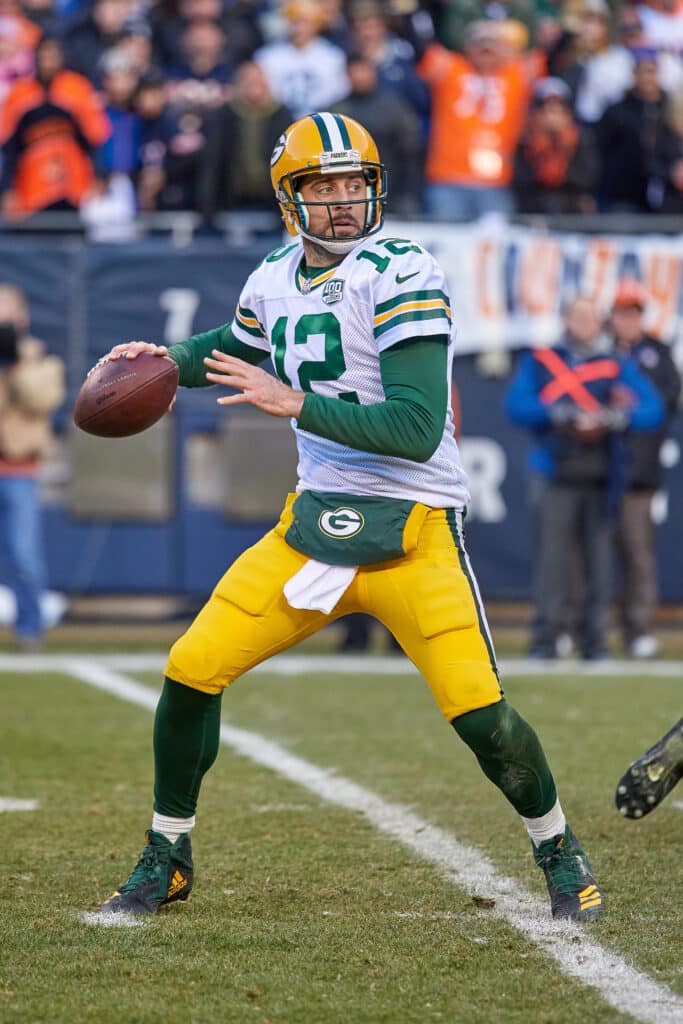
In this scenario, Jaxson Dart’s fate looks even bleaker as the consensus No. 3 quarterback in this draft. If Sanders went to Pittsburgh at No. 21, Dart isn’t going to the Chargers (No. 22), Packers (No. 23), Vikings (No. 24), or Texans (No. 25). The Rams (No. 26) could give him a shot because of Matthew Stafford’s age, but he’s not going to the rest of the first round (Ravens, Lions, Commanders, Bills, Chiefs, and Eagles).
Maybe at the top of the second round, the Browns (No. 33) or Giants (No. 34) can take a quarterback they passed on at No. 2 and No. 3. Maybe someone trades up to get Dart late in the first round to secure that valuable fifth-year option for his rookie deal.
But let’s back up for a second, as Dart isn’t the story here. The real story is if Sanders gets past the Saints at No. 9 and the Steelers are his next best suitor at No. 21. Some have been hyping this up more and more in the last few days, especially in the last 24 hours:
Would Sanders to Pittsburgh at No. 21 be a draft steal or a draft dud? I’m thinking a dud, because NFL history shows us the fact that he’s still available at No. 21 should be the biggest red flag of them all.
Table of Contents
How the Rest of the NFL Views These Quarterbacks Matters
Again, in a normal year with great quarterback prospects, you’d likely see Shedeur Sanders and Jaxson Dart lined up for top nine picks with those teams like the Browns, Giants, Raiders, Jets, and Saints all in need of a quarterback for the long-term future.
Throw in the Titans having their choice of quarterbacks at No. 1, and that’s six teams in the top 10 who should be looking extensively at the most important position in the game.
The importance of the quarterback shows that you don’t even necessarily have to be a great prospect to get first-round attention. People thought Will Levis was going No. 4 to the Colts two years ago, and last year, Michael Penix Jr. (8th overall) and Bo Nix (12th overall) went much higher than expected.
A rookie quarterback contract is very cheap relative to paying an established veteran, which can be $53 to $60 million per season now. Ever since the new CBA in 2011 reworked the rookie pay scale, this has been a big advantage for teams as it makes them more likely to move on from a bad first-round quarterback, as the Cardinals did in 2019 (replaced Josh Rosen with Kyler Murray) and why the Steelers traded Kenny Pickett after 2023.

Even in that 2011 draft during the lockout, the first year with the rookie wage scale, you saw teams reach on bad quarterbacks in the first round like Blaine Gabbert, Jake Locker, and Christian Ponder. The price wasn’t so steep anymore.
Cost aside, there’s also that regression to the mean we talked about in the intro. 2024 was such a historic quarterback class that it’s going to be hard to top in 2025. You practically never see two loaded quarterback classes in back-to-back years, but you do see regression:
- After six quarterbacks were drafted in the first round in 1983, including three Hall of Famers (John Elway, Jim Kelly, and Dan Marino), the 1984 draft didn’t see a quarterback taken until Boomer Esiason with the 38th pick in a so-so class that also featured Jeff Hostetler (59th) and Jay Schroeder (83rd).
- The 2004 NFL Draft had a historic start with Eli Manning, Philip Rivers, and Ben Roethlisberger in the first 11 picks. But the 2005 draft saw Aaron Rodgers wait it out in the green room before he became the only great quarterback in the class.
- After the 2018 draft’s first round featured Baker Mayfield, Sam Darnold, Josh Allen, Josh Rosen, and Lamar Jackson, the 2019 draft could only muster Kyler Murray, Daniel Jones, and Dwayne Haskins.
- The 2020 draft may have provided us with five franchise quarterbacks in Joe Burrow, Justin Herbert, Tua Tagovailoa, Jordan Love, and Jalen Hurts. But the 2021 draft has already been infamous for disappointment with Trevor Lawrence, Zach Wilson, Trey Lance, Justin Fields, and Mac Jones. Save us Trevor Lawrence, you’re our only hope.
Maybe 2025 is one of those drafts where only one quarterback (most likely Ward) is a good starter. We’ll see.
We just know NFL teams will do crazy things to get it right at the quarterback position, as evident by the Falcons last year. So, if there’s a position that can get over-drafted high, it’s quarterback.
That means when most of the league keeps passing on a quarterback who falls into the 20s, there just might be something really wrong with him.
When the Steelers made Kenny Pickett the QB1 in the 2022 draft with the 20th overall pick, that should have been the biggest red flag of them all. Even bigger than the fact that he was a one-year wonder who they probably only drafted because he went to Pitt, and they didn’t want to repeat their mistake of missing out on local legend Dan Marino in 1983.
When I wrote my 2022 Steelers preview for Bookmakers Review, I included this information that foretold Pickett’s long odds of working out:
Pickett was only the second quarterback after Jim Druckenmiller (a huge bust), who was a first-round pick and QB1 in his draft class, who didn’t get selected until pick 20 or later. The result was the lowest passing touchdown rate in NFL history, leading the Steelers to trade him to Philadelphia in March 2024.
The 2022 quarterback class proved to be so historically bad that Brock Purdy, Mr. Irrelevant, looks like the only saving grace from it. The fact that no one bit on a quarterback in the first 73 picks except for Pittsburgh at No. 20 was in fact damning of that group of players.
Sometimes, the majority of the league is absolutely right on prospects. You can’t ignore that type of free information, so the Steelers were already burned on such a pick in 2022.
But 2022 is a different beast from 2025.
Shedeur Sanders: Why QB2 at No. 21 Is a Red Flag Too
In Sanders’ case, we’re potentially looking at QB2 falling to No. 21 in the draft, a full 20 picks after the presumptive QB1 is drafted. That would be unusual and not a good sign for Sanders’ likelihood of success.
In the 55 NFL drafts since the 1970 merger, 60% of them saw the QB2 (second quarterback drafted) go no more than nine picks after the QB1 (first quarterback drafted). In 6-of-7 drafts since 2018, QB2 was taken by the sixth pick.

But letting more than half a round go by in the draft between QB1 and QB2 would be a red flag for Sanders. Consider that’s only happened 18 times since 1970, and consider this is the group of QB2s it produced (gap in picks between QB1 and QB2’s draft position in parentheses)
- 1992: Tommy Maddox (19)
- 2014: Johnny Manziel (19)
- 1985: Frank Reich (20)
- 1984: Jeff Hostetler (21)
- 2007: Brady Quinn (21)
- 2005: Aaron Rodgers (23)
- 2013: Geno Smith (23)
- 2010: Tim Tebow (24)
- 1981: Neil Lomax (27)
- 1973: Gary Huff (31)
- 1989: Mike Elkins (31)
- 2001: Drew Brees (32)
- 1978: Matt Cavanaugh (33)
- 1976: Mike Kruczek (41)
- 1996: Bobby Hoying (43)
- 2000: Giovanni Carmazzi (47)
- 2022: Desmond Ridder (54)
- 1975: Gary Sheide (63)
Ouch. Out of 18 picks, only four (22.2%) were really successful for the team that drafted them. Jeff Hostetler was a long-time backup until he had to take over for an injured Phil Simms in 1990 and won a Super Bowl. Drew Brees had his best days in New Orleans rather than San Diego. Neil Lomax was injured and retired early. Geno Smith didn’t do well until many years later in Seattle, Tommy Maddox was a one-year wonder for the Steelers (2002) after selling insurance, and Frank Reich was a decent backup for Buffalo.
But most of these players didn’t amount to anything in the NFL, and these were all QB2s. But let’s take the QB2 aspect out of it. Generally speaking, quarterbacks drafted in the 19-23 pick range have been very poor since 1970.
Here is the full list:
- 1977 Cardinals, No. 19 – Steve Pisarkiewicz
- 2003 Ravens, No. 19 – Kyle Boller
- 2022 Steelers, No. 20 – Kenny Pickett
- 2003 Bears, No. 22 – Rex Grossman
- 2004 Bills, No. 22 – J.P. Losman
- 2007 Browns, No. 22 – Brady Quinn
- 2012 Browns, No. 22 – Brandon Weeden
- 2014 Browns, No. 22 – Johnny Manziel
- 1979 Chiefs, No. 23 – Steve Fuller
Pretty vomit-inducing list, right? Never let Cleveland use the No. 22 pick on a quarterback ever again. I’d say these teams went 0-for-9, but I guess you can give the Bears a little credit for getting a Super Bowl run out of Rex Grossman in 2006 even if he was dreadful at times and was carried by the defense, running game, and special teams (Devin Hester).
Harder to Find Good Quarterbacks in Late First Round
While that last list is terrifying, it’s also really small to the point where Cleveland has 33.3% of the list in 55 drafts. That’s a fair criticism. But even if you break the range down to the 19-32 picks (usually reserved for playoff teams unless trades were made), the success rate for drafting quarterbacks is just worse than the rest of the first round since 1970.
I grouped all the quarterbacks drafted since 1970 into four groups of hit, bust, meh/to be determined, and someone who played better elsewhere after not shining for their drafted team (so there was a “good” prospect in there after all).
No. 1 Overall Picks (64.3% Hit Rate, 14.3% Bust Rate): It’s still the best way to find a good quarterback as I ranked 18 of the 28 players as a hit, and the only true busts were Tim Couch (injuries/expansion team), David Carr (sack merchant), JaMarcus Russell (useless), and Sam Bradford (injured often). Players like Jim Plunkett (Raiders), Vinny Testaverde (Browns/Ravens/Jets), and Jeff George (Falcons/Raiders/Vikings) all proved to be better elsewhere. Bradford (Eagles/Vikings) arguably was better (“passable”) elsewhere, too.
Top 10 Picks But Not No. 1 (41.5% Hit Rate, 35.8% Bust Rate): For top 10 picks who weren’t the No. 1 overall pick, the hit rate falls to 41.5% and the bust rate climbs to 35.8% with some real duds like Rick Mirer, Ryan Leaf, Zach Wilson, Heath Shuler, Art Schlichter, etc. But you also have hits like Patrick Mahomes, Josh Allen, Justin Herbert, Matt Ryan, Philip Rivers, Bert Jones, Donovan McNabb, etc. Also more “meh” choices in between bust and hit like Marcus Mariota and Robert Griffin III (injured).
No. 11 to No. 18 Picks (47.8% Hit Rate, 43.5% Bust Rate): These picks were just outside of the top 10 and before the range of playoff teams. It’s a real coin flip with 11 hits, 10 busts, and a meh for Marc Wilson (Raiders) and Tony Eason (Patriots). But Jim Kelly, Ben Roethlisberger, Joe Flacco, and Deshaun Watson (pre-Cleveland) were undeniably hits.
No. 19 to No. 32 Picks (28.6% Hit Rate, 53.6% Bust Rate): The highest bust rate and lowest hit rate for this group. Aaron Rodgers, Dan Marino, Lamar Jackson, and Drew Brees (technically a 2nd-round pick) are incredible hits, but you’re also nearly twice as likely to land a Jim Druckenmiller, Cleveland’s ungodly No. 22 trio, Todd Marinovich, Paxton Lynch, Kyle Boller, and Mark Malone.
Sometimes, a legitimate quarterback just falls, as some believe there were fabricated rumors of drug (marijuana) use that made Dan Marino slide to No. 27 in that famed 1983 class. Aaron Rodgers sitting while a bunch of running backs and busts were drafted in 2005 was really weird, but blame the 49ers for taking the wrong quarterback (Alex Smith) at No. 1 too. Drew Brees was also knocked for his height, and Lamar Jackson was thought to be too unpolished of a passer that should convert to wide receiver by these GM brain trusts.
It’s clearly not impossible to land a good quarterback in this portion of the draft. It’s just not as likely, especially if 20 teams already had a crack at him.
Conclusion: What Should the Steelers Do?
You may be thinking I’ve provided strong historical evidence that Sanders as a QB2 pick at No. 21 would likely be a bad thing for the Steelers in this draft. But I haven’t said anything about why he, specifically, as a prospect, wouldn’t be a good choice.
Let’s take care of that quickly.
I think it’s a slight red flag that his father was his only college coach at Jackson State and Colorado, as you wonder about preferential treatment. Sanders just had his number retired at Colorado after those two seasons, which rubbed many the wrong way as it only happened because his dad was the coach. So, there’s a sense of entitlement here to worry about for someone who really didn’t win any big games in college. Even Kordell Stewart had bigger wins at Colorado and didn’t get his number retired.
But for strictly on-field stuff, Sanders is a pocket passer who likes to hang onto the ball long and takes some bad sacks. This isn’t a good fit for a Pittsburgh offense that already struggled with those issues last year with Russell Wilson and Justin Fields in an Arthur Smith offense that loved moonballs and didn’t do much in the intermediate range or over the middle of the field.
By trading for DK Metcalf, the Steelers have two similar players in Metcalf and George Pickens, which isn’t a good mix when they are 60% catch rate players, as they are best utilized on deep balls and creating big plays with their size and speed. Where are the quick hitters in this offense, the bread-and-butter plays for a high-percentage passer like Sanders? He’s not going to have that if they really feature Metcalf and Pickens as their top duo.
It just doesn’t look like the right fit for right now for both the Steelers and Sanders. In Sanders’ case, his best spot might be the Saint,s where he can learn the offense from Kellen Moore, who has successfully worked with a good variety of quarterbacks, and they have some solid three-level speed at receiver in Chris Olave and Rashid Shaheed.
For the Steelers, they are in this unique situation as the only team in the Super Bowl era to completely ditch 100% of their quarterback depth chart in back-to-back seasons before the draft. Their continued pursuit of Aaron Rodgers should have no bearing on this draft as someone who turns 42 in December is not part of the long-term plan anyway.
They should come out of this draft with a quarterback, but that doesn’t mean you have to force one at No. 21. It’s possible they could trade up into the second round and try Alabama’s Jalen Milroe as a project with some upside.
Sure, second-round picks have a weak hit rate too since 1970. But they are a smaller investment as well. If Sanders is still waiting at No. 21 on Thursday night, that shouldn’t necessarily be viewed as a blessing in disguise for the Steelers.
Instead, consider it a warning. Disappointment ahead; move with caution.
Related Articles:
- 2025 NFL Draft Preview: Is Travis Hunter a Modern Marvel or a Future Failed Experiment?
- 2025 NFL Draft Preview: The Defensive Line and Edge Rushers Are the Cream of the Crop
- 2025 NFL Draft Preview: The Best Cornerbacks Not Named Travis Hunter
- 2025 NFL Draft Preview: Don’t Sleep on the Linebacker and Safety Classes
- 2025 NFL Draft Preview: The Top 10 Offensive Line Prospects
- 2025 NFL Draft Preview: Ashton Jeanty to Lead the Rebirth of the Running Back?
- 2025 NFL Draft Preview: Meet the Best Wide Receivers Not Named Travis Hunter
- Julio Jones Retires: More Proof Jerry Rice’s NFL Records Look Unbeatable in 2025
- 2025 NFL Draft Preview: Tyler Warren and the Value of a Great Tight End
- 2025 NFL Draft Preview: Don’t Expect a Deep Quarterback Class Like 2024
- Where Every NFL Team Stands After Free Agency: Super Bowl 60 Odds Update
- Bengals Bungle Team Building 101: Your Franchise QB Shouldn’t Need the Most Expensive Wide Receiver Duo in NFL History
- 2025 NFL Free Agency Update: Still Waiting on Aaron Rodgers to Decide
- 2025 NFL Free Agency: The Moves Already Made and Those Still to Come
- Will the NFL See Turnover Regression in 2025, And What Does It Mean for Teams Like the Bills and Eagles?
- The NFL Should Ban the Tush Push for 2025
- Do NFL Teams Have a Great Blueprint to Beat Patrick Mahomes and the Chiefs in 2025?
- 2025 NFL Season: Predicting the New Starting Quarterbacks from Aaron Rodgers to Cameron Ward
- Anatomy of a Super Bowl Blowout: Where the Chiefs and Eagles Go from Here and Super Bowl 60 Odds
